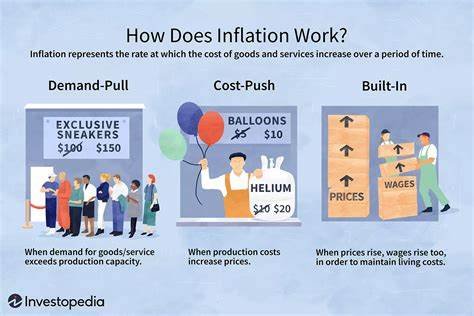Inflation, the general increase in prices over time, can be attributed to a multitude of interconnected factors. One significant contributor is demand-pull inflation, wherein consumer demand outpaces the available supply of goods and services, prompting sellers to raise prices. This often occurs during periods of robust economic growth or when government stimulus measures fuel consumer spending.

Conversely, cost-push inflation arises when the costs of production rise, leading businesses to pass on these expenses to consumers. This can stem from various sources, including wage hikes, elevated raw material costs, or increased taxes. Central to inflationary dynamics is the role of monetary policy; expansionary measures adopted by central banks to stimulate economic activity, such as lowering interest rates or increasing the money supply, can inadvertently spur inflation if not balanced carefully.
Additionally, disruptions to global supply chains, whether due to natural disasters, geopolitical tensions, or pandemics, can lead to shortages and price hikes for certain goods. Expectations also play a crucial role; if businesses and consumers anticipate sustained price increases, they may adjust their behavior, reinforcing inflationary pressures. Exchange rate fluctuations further complicate the picture by impacting the prices of imported goods. Understanding the intricate interplay of these factors is essential for policymakers tasked with managing inflation to ensure economic stability and growth.
Congratulations, your post has been upvoted by @upex with a 0.16% upvote. We invite you to continue producing quality content and join our Discord community here. Keep up the good work! #upex
Downvoting a post can decrease pending rewards and make it less visible. Common reasons:
Submit